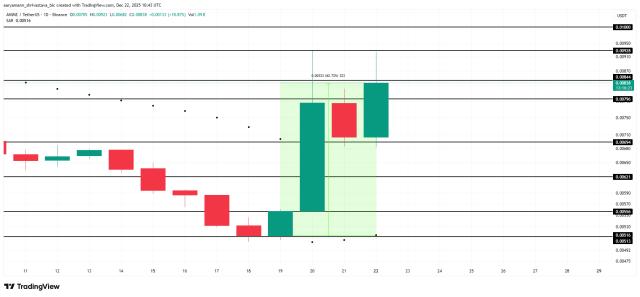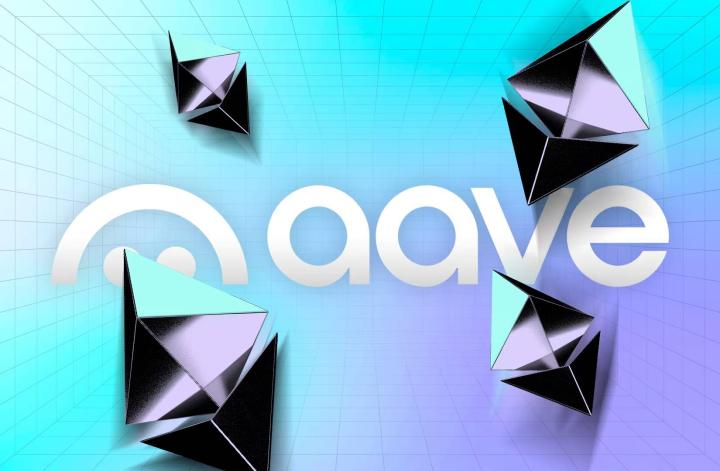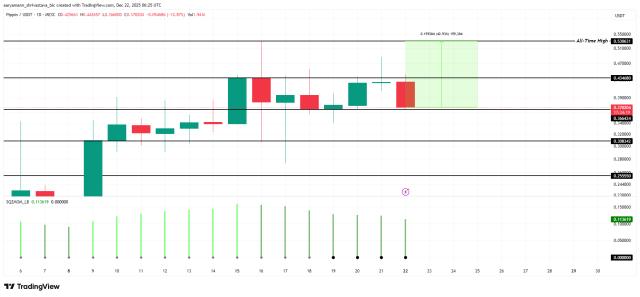Stablecoins, as a special form of cryptocurrency, differ from highly volatile crypto assets like Bitcoin and Ethereum by being pegged to fiat currency, significantly reducing price volatility risk. This characteristic has gradually expanded stablecoins from an "insider payment tool" in the crypto industry to broader commercial and consumer scenarios.

In recent years, with the improvement of global digital payment acceptance, especially driven by hot topics like DeFi and Non-Fungible Token, ordinary users' acceptance of crypto wallets and stablecoins has rapidly increased. Mainstream stablecoins including USDT and USDC are increasingly used in scenarios such as e-commerce, subscriptions, gig payments, and international remittances.
Compared to consumer-side payments, B2B enterprises are more eager for low-cost, high-efficiency global payment solutions. Stablecoins, with characteristics like instant settlement, low cost, and transparency, are gradually becoming a new choice for inter-enterprise settlements. According to the report "Stablecoin Payments from the Ground Up" by crypto risk analysis company Artemis and crypto investment companies Dragonfly and Castle Island Ventures, B2B stablecoin payment scale surged from $100 million in January 2023 to $3 billion in February 2025. Stablecoins are progressively becoming a core financial sector for enterprises and inspiring a broad market space.

Stablecoin Rise: From Crypto Niche to Future Financial Core
In recent years, the stablecoin market size has shown explosive growth. According to the report "Stablecoins: The Emerging Market Story" jointly released by Castle Island Ventures and Brevan Howard, global stablecoin circulation increased from less than $1 billion in 2017 to over $160 billion in 2024. In 2023 alone, stablecoin settlement amount reached an astonishing $3.7 trillion, with $2.62 trillion already reached in the first half of 2024 (annualized at $5.28 trillion). These data indicate that stablecoins are no longer just a tool for crypto trading, but have become an important medium for global value exchange.
This has forced major global market regulators to take clear regulatory stances on stablecoins. On May 21, 2025, the Hong Kong Legislative Council formally passed the "Stablecoin Regulation Draft," establishing a licensing system for fiat-backed stablecoins; on July 28, the US House of Representatives passed three crypto-related legislations: the CLARITY Act, GENIUS Act, and Anti-CBDC Monitoring National Act. These regulatory developments signal that stablecoins are moving out of the gray area and approaching the edge of mainstream financial systems.
Under this trend, traditional financial giants are accelerating their embrace of stablecoin technology, with Visa and Mastercard also launching settlement functions integrating stablecoins. This will further promote stablecoin applications in B2B payments, providing enterprises with more efficient and lower-cost payment solutions.
B2B Scenario Implementation: New Solutions Brought by Stablecoins
Compared to traditional bank wire transfers, stablecoins demonstrate significant advantages in B2B payment fields.
First, in terms of speed, traditional cross-border payments typically require 1-5 working days for settlement, while stablecoin transactions can achieve near-instant clearing on the blockchain, greatly shortening enterprise fund turnover cycles. Second, in terms of cost, traditional cross-border payments involve multiple intermediate banks, with each institution charging fees, resulting in total costs of 3-5% of the transaction amount, whereas stablecoin transaction fees are usually below 0.1%. Additionally, the blockchain-based characteristics of stablecoins bring advantages like high transparency, strong programmability, and year-round availability, which are difficult for traditional financial institution systems to achieve.

(a16z's "State of Crypto Report 2024" shows that the average international wire transfer fee is $44, while the average cost of sending USDC on Coinbase's popular L2 network Base is less than one cent)
As Web3 financial infrastructure and risk control compliance capabilities gradually improve, stablecoins are rapidly penetrating the B2B payment field and entering actual business implementation stages. Especially in regions with high currency value fluctuations like Latin America and Southeast Asia, many enterprises have begun using stablecoins for cross-border payments, salary disbursements, and procurement settlements, thereby optimizing payment processes, reducing operational costs, and improving fund efficiency.
(Translation continues in the same manner for the rest of the text)Here's the English translation: However, enterprises need to consider implementation thresholds when adopting stablecoin payments, including cryptocurrency acceptance by transaction parties, compliance and risk control, price volatility risks (despite stablecoins' design to maintain anchoring), and technical operational complexity. Collaborating with professional crypto payment service providers, rather than directly engaging in cryptocurrency operations, is a more prudent choice for most enterprises. Companies like Interlace, an innovative financial firm linking Web3 and Web2, offer products and solutions covering global accounts, Infinity Card, CryptoConnect, CaaS API, and provide fiat and stablecoin payment, settlement, and fund management solutions for Web3 institutions, crypto exchanges, cross-border e-commerce, B2B trade, and other enterprise and transaction scenarios, covering over 180 countries and regions. Regulation and Compliance: Key Thresholds and Strategies for Enterprise Stablecoin Adoption Despite stablecoins bringing significant efficiency improvements to B2B payments, enterprises must cautiously address various compliance risks and operational challenges. The primary compliance risk stems from regulatory uncertainty—different jurisdictions have vastly different legal definitions of stablecoins: some U.S. states regulate them as money transmission tools, the EU defines them as "electronic money tokens" through MiCA, while some countries completely prohibit stablecoin transactions. This fragmented regulatory environment requires enterprises to conduct comprehensive compliance assessments before cross-border stablecoin usage. Additionally, anti-money laundering (AML) and KYC/KYB requirements pose another major compliance challenge. The Financial Action Task Force (FATF) has incorporated virtual asset service providers (VASPs) into its international standards, requiring the same AML/CFT control measures for crypto transactions as traditional finance. This means enterprises directly using stablecoins for large B2B payments may need to undertake customer due diligence and transaction monitoring responsibilities. To address these challenges, enterprises can consider the following compliance strategies: Collaborate with regulated stablecoin issuers (such as Circle's USDC) and trading platforms to ensure underlying asset compliance Introduce licensed virtual asset service providers in the transaction chain to bear AML/KYC responsibilities Establish dedicated blockchain transaction monitoring systems or purchase professional services like Chainalysis to ensure traceability Web3 financial companies like Interlace are helping enterprises meet these compliance requirements. Interlace integrates multiple protections in product design, including intelligent risk control, compliance review, and user identity verification to achieve KYC/KYB verification and AML monitoring. Notably, for on-chain anti-money laundering, Interlace has built KYT (Know Your Address) and KYA (Know Your Transaction) solutions—using extensive data tag libraries to risk-rate on-chain addresses and real-time control of high-risk transactions. They continuously monitor crypto addresses and conduct periodic retrospective screening and address rotation to ensure platform and fund safety. Currently, Interlace has obtained licenses and qualifications in multiple jurisdictions, including Hong Kong TCSP, Lithuanian VASP, U.S. MSB, and meets the international payment card industry's highest security certification PCI-DSS Level 1, meaning enterprises can focus on business development with Interlace's compliance and risk control resources. Future Outlook: New Enterprise Payment Landscape Driven by Stablecoins According to the "Stablecoin Payments from the Ground Up" report analyzing data from 31 stablecoin payment companies, they completed over $94.2 billion in daily payment transactions from January 2023 to February 2025. B2B payments represent the primary use case, with an annualized transaction volume of $36 billion, reflecting stablecoins' practical application value in cross-border settlement, fund management, and supply chain payments. Card-linked stablecoin payments are also showing rapid growth, with an annualized transaction amount exceeding $13.2 billion. As regulatory frameworks stabilize and blockchain technology advances, it's expected that 40% of global enterprises will adopt crypto payments by 2030. Long-term, stablecoins and related blockchain technologies will profoundly reshape enterprise payments and asset management. Fund transfers will shift from traditional financial institution processing to 24/7 real-time flow; payment, settlement, and clearing will become a single step; and enterprise cash flow visibility and control will significantly improve. These changes collectively point toward a more efficient and inclusive global enterprise payment system. In today's irreversible blockchain wave, enterprises that proactively layout stablecoin payment capabilities will gain significant competitive advantages—faster fund turnover, lower transaction costs, and superior customer experiences. Stablecoins represent not just payment technology iteration but a crucial upgrade to global financial infrastructure.






